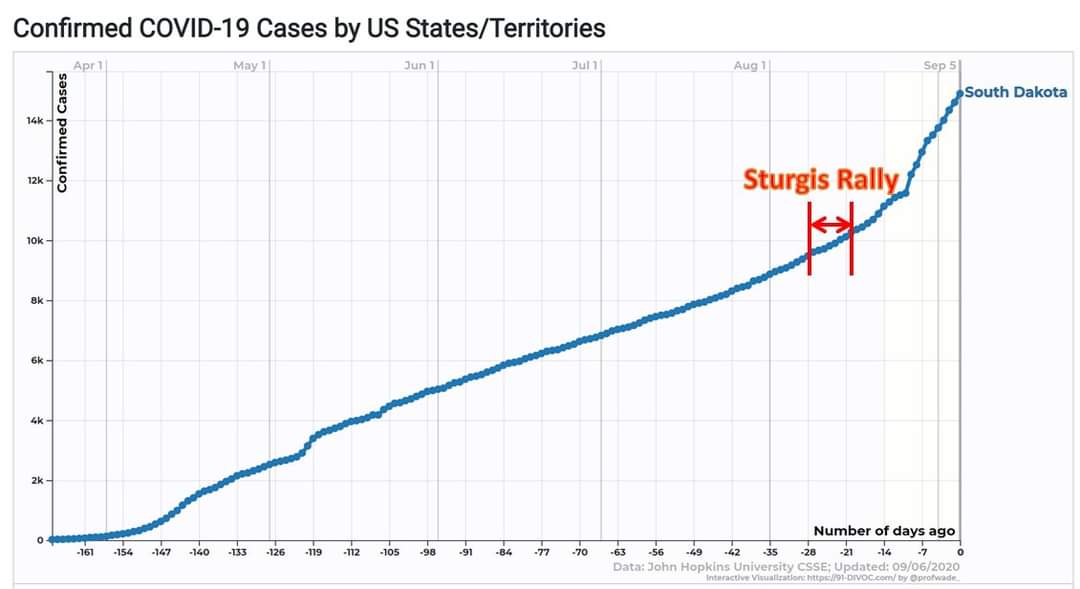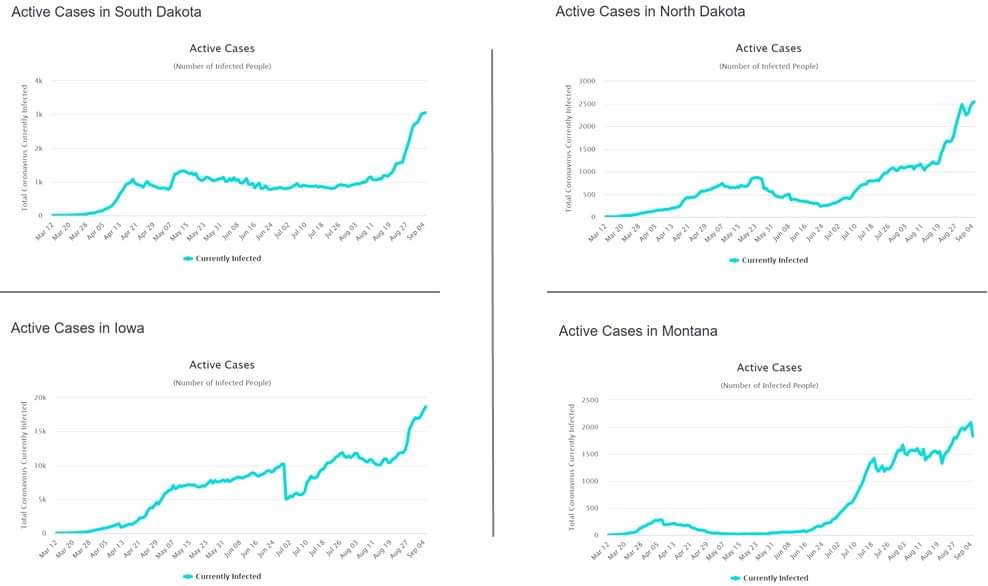From Steven Millman:
September 6th COVID Fact Check – Is it the case that the Sturgis rally was not a super spreader event like we were all worried about because there have been only ~300 cases traced to the rally?
FALSE: The Sturgis rally has created a massive increase in infections, but due to the high mobility of the rally goers and limited contract tracing, it may never be clear just how large the impact has really been.
It’s important to understand when thinking about this claim that the numbers being reported are contact traced and confirmed cases and that VERY FEW cases are being traced. The true number is much, MUCH larger but can only be inferred from available data. In order to understand how much larger the impact has been JUST in South Dakota, consider the following data.
On August 16th, the last day of the Sturgis rally, there were 10,274 TOTAL confirmed cases of COVID-19 in South Dakota since the pandemic began six months ago. In just the last three weeks, there have been an additional 4,835 cases - an increase of about 47%. For the two months prior to Sturgis, South Dakota was averaging about 50 new cases per day. Since the rally, South Dakota has averaged about 230 per day – a 460% increase.
For more perspective, if the rally had not occurred and the rate of new cases remained stable, the number of confirmed cases in South Dakota would likely be about 11,325 instead of today’s actual count of 15,109. The excess confirmed cases one might reasonably attribute to the Sturgis rally in South Dakota is therefore about 3,785 SO FAR.
Lest one conclude that this is a function of increased testing and not spread, while the level of testing has increased slightly it has been well below the rate of increase in new confirmed cases. In the three weeks prior to the rally there were 21,484 tests given in South Dakota compared to 25,133 in the three weeks after. That’s a 17% increase in testing compared to a 246% increase in confirmed cases in that same time period. We also see this play out as expected in the case positivity rates (confirmed cases as a percent of tests performed) which is a commonly used metric for understanding community spread. At the time of the rally, the case positivity rate was about 9%, which is still fairly high compared to the desired rate of less than 5%. Over the last week, case positivity in South Dakota has hovered around a very dangerous 22%.
Taken together, these data paint a rather incontrovertible picture that the Sturgis rally was indeed a super-spreader event in South Dakota, and suggest that the rally-goers further spread the virus to many other locations across the US, in particular in nearby states such as North Dakota, Montana, and Iowa as you can see in the attached graphic.
Be safe, wear a mask, and don’t attend events with 400,000 people and no social distancing. Hard to believe that last part merits a reminder.
Data are drawn from Johns Hopkins University’s COVID tracking project and Worldometer. As always, don’t forget I’m not a medical professional or epidemiologist. I’m a professional statistician with too much on my mind.

